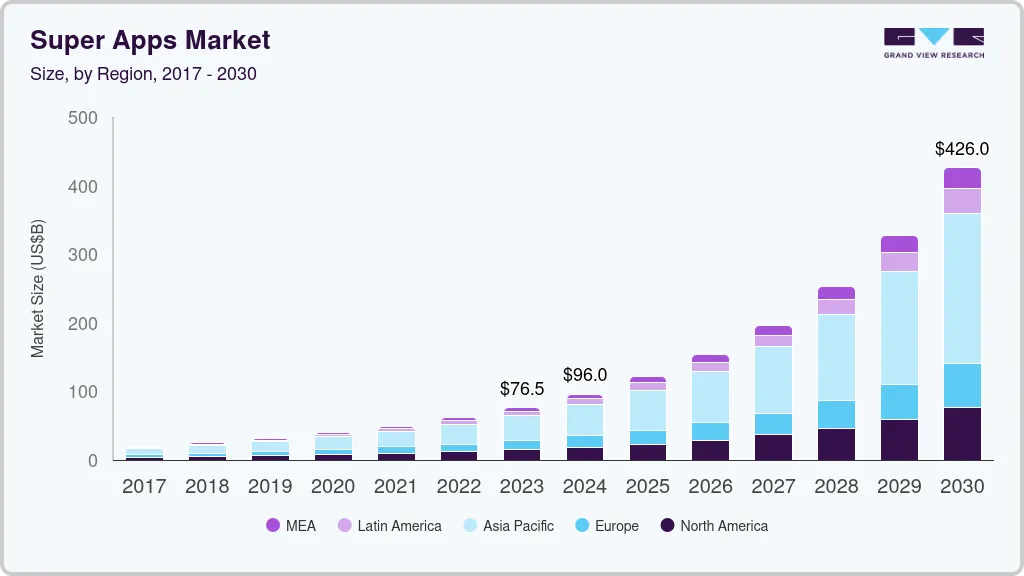Summary
Are superapps the next evolution of connectivity? In this episode, Mobilise CEO Hamish White is joined by CCO Per Kristoffersen and Head of Products Mo Waheed to explore the rise of superapps. What they are, how they’re reshaping industries, and why telcos are uniquely positioned to succeed in this space. They unpack how Asian markets pioneered the trend, the role of user experience in making or breaking a superapp, and why telecoms must shift from traditional models to become digital lifestyle providers. From Revolut and Grab to AI, eSIMs, and the future of connectivity, this episode discusses how technology, design, and user behaviour are driving the next wave of digital innovation.
Listen to our podcast
Check out The Mobilise Podcast on Apple Podcasts and Spotify
What Are Superapps?
Superapps have become a defining feature of the modern digital landscape. Instead of managing multiple apps for different services, users can access everything, from payments and travel bookings to data plans, all within one platform. As Hamish explains,
A superapp is really a combination of a variety of different apps under one digital ecosystem.
Hamish White, CEO of Mobilise
The global appetite for this convenience is growing rapidly, and the market clearly reflects this demand. According to Grandview Research, the superapp market was valued at $61.3 billion in 2022 and is projected to reach over $590 billion by 2033. This surge is driven by user demand for simplicity and the need to overcome subscription fatigue, the overload of services and apps competing for consumer attention.
 Source: Grandview Research
Source: Grandview Research
Relevance and User Experience – The Secret to Success
The success of any superapp depends mostly on how relevant it is to its users and how seamless the experience feels.
Relevance is the key… services you appreciate, that you want to use, that you don’t mind paying for.
Per Kristoffersen, CCO of Mobilise
Mo adds that superapps need to feel cohesive: “From a product perspective, it’s about the seamless user experience. Having one wallet for multiple services, one orchestration. As a user, I don’t want to feel disconnected”. This cohesive, personalised experience for the user is what makes a true superapp and not just a collection of features stitched together.
Why Asia is Leading the Superapps Revolution
Asia continues to dominate the global superapp market, accounting for 47% of total revenue in the global superapps market in 2023. The region’s success stems from its unique mobile-first development and infrastructure, allowing it to thrive. In markets where broadband never reached widespread adoption, such as Europe and the US, users “hopped over fixed and went straight to mobile”.
A great contributor to its success in the region is that social and economic factors also played a role. With large segments of the population previously unbanked, mobile wallets filled a crucial gap, becoming the gateway to services, payments, and communication. Setting the foundation for the region’s superapp boom today.
Having an app where I can pay, exchange, and buy. That opened a new world for users.
Mo Waheed, Head of Products at Mobilise
User Behaviour and the Generational Gap
Changing user behaviour is one of the biggest challenges when introducing new digital ecosystems, and superapps are no exception. While the technology may be ready, people’s habits often take much longer to evolve.
This generational divide is particularly visible between younger, mobile-native users or digital customers, and older generations who are less digitally confident. As Per puts it, “They use the mobile for everything…they trust it.”
Many superapps are designed to make interactions so easy that users can’t resist switching. The simplicity is powerful, but it also raises new expectations. As Hamish notes, “It’s almost too easy, but it shows how important design and trust are in changing user habits”.
Ultimately, behavioural adoption for the majority isn’t just about the technology, but about the psychology surrounding the experience, familiarity and confidence. Superapps will succeed when they build trust through ease of use, relevance, and clear value for every generation of users.
Can Telcos Become Superapp Leaders?
Telecom operators have a unique opportunity to lead in this space. They have the infrastructure and customer reach to become superapp leaders, yet most haven’t seized the opportunity. As Hamish puts it,
Telcos have huge captive audiences, high frequency of touch points, and a lot of infrastructure that lends towards a super app ecosystem.
Hamish White, CEO of Mobilise
However, Per suggests that risk aversion is holding them back: “They don’t want to take the risk. There’s a focus on short-term profit… three years is too long to start something in the telco business”.
Mo argues that the problem lies in the mindset. Many telcos still operate like network providers rather than digital product companies. “They need to think like tech firms, make the product the centre of everything,” he says.
Building or Buying Superapps
When it comes to creating a superapp, one of the biggest strategic questions for telecom operators is whether to build their own platform from scratch or buy an existing solution.
Mo argues for flexibility: “Sometimes it’s not a small idea to reinvent the wheel… it’s all about orchestration, modularity, and UX”.
Per adds that owning the customer experience is key: “It’s about owning the communication channel with your subscribers”.
What’s clear is that superapps aren’t built through aggregation alone. They rely on careful orchestration between different services, seamless integration, and a strong design philosophy. Whether built internally or in collaboration with technology partners, the key is to maintain a consistent and intuitive experience that reflects the brand’s identity.
For telcos, the right approach will depend on scale, technical capability, and strategic priorities. But one thing is clear: the customer experience must remain at the forefront of the transformation.
RECOMMENDED READING
The Future of Superapps and Telecoms
As the discussion turns to the future, the team agrees that superapps will increasingly influence how telcos operate. But not necessarily in the way many might expect.
Telecoms are being embedded in non-telco digital ecosystems...They’ve talked themselves into becoming bit pipes, but that’s also creating new opportunities.
Hamish White, CEO of Mobilise
Rather than leading their own ecosystems, many telecom providers are likely to become embedded within other digital environments. From fintech to travel and lifestyle apps, connectivity is becoming an integrated component of broader digital experiences. Mo notes that this trend is already visible, with major brands now offering travel eSIMs and data bundles directly through their apps.
This shift reflects a deeper transformation in how users perceive telecoms. Connectivity is no longer a standalone product. It’s the foundation for digital life. By combining features such as identity verification, digital wallets, and data services, superapps are transforming the way consumers interact with technology on a daily basis.
Hamish agrees, suggesting that the future lies in collaboration and user experience. As eSIMs make switching providers easier than ever, telcos will need to strengthen loyalty through design, trust, and convenience. The real advantage won’t come from being the biggest provider, but from being the most user-centric.
Ultimately, superapps are transforming connectivity from a utility into an experience. For telcos willing to evolve, this new ecosystem offers not just survival, but leadership in shaping the next era of digital engagement.
Conclusion
As the conversation makes clear, superapps represent both a challenge and an opportunity for the telecom industry. Success depends not only on technology but also on mindset, innovation, and user understanding. Telcos must evolve from connectivity providers into digital lifestyle enablers, placing user experience, relevance, and orchestration at the heart of their strategy.
As Hamish summarises, “The key success factor for any superapp strategy is that the user experience has to be excellent… It’s got to make customers come back for more”.



